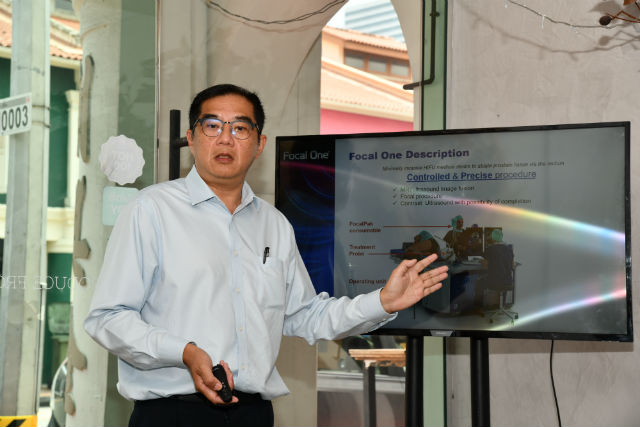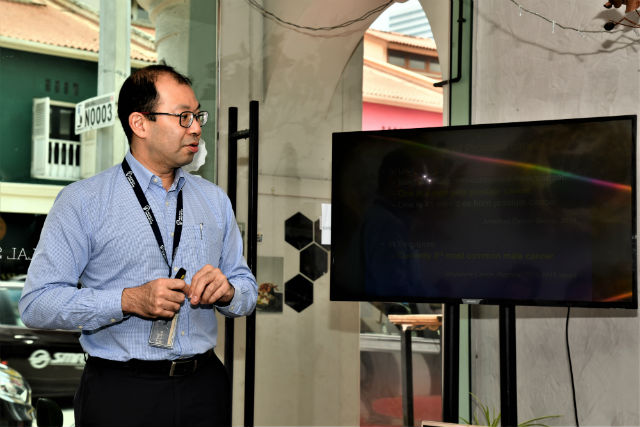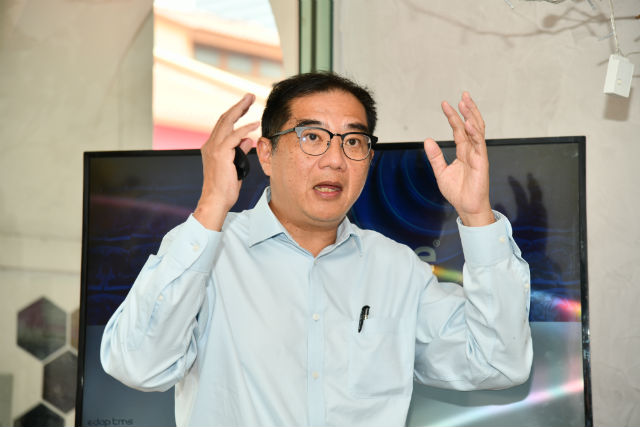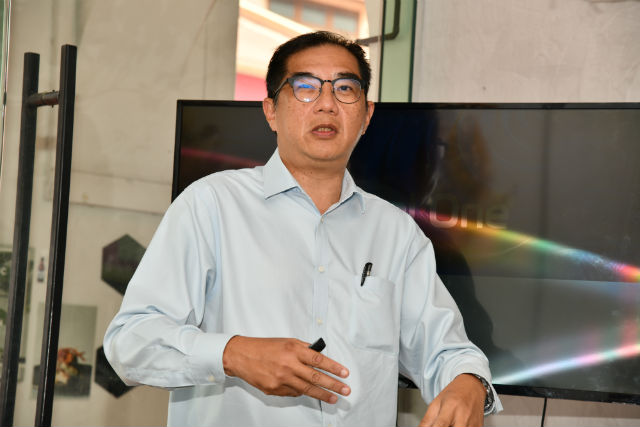With November being Prostate Cancer Awareness Month, PanAsia Surgery Group recently organised a sharing session cum lunch at Brine Cafe – to introduce invited media guests to a brand new and non-invasive targeted Focal Therapy for prostate cancer.
The talk had been conducted by PanAsia Surgery’s urologists Dr. Sam Peh and Dr. Chong Kian Tai.

Third most common cancer amongst Singaporean men
Dr. Chong kicked off the talk, sharing that prostate cancer is the most common form of non-cutaneous cancer in men, with one in nine men getting diagnosed with this.
And moreover, it is the third most common cancer amongst Singaporean men, behind colorectal and lung cancers.
Risk factors and symptoms for prostate cancer
Risk factors that predispose a man to prostate cancer are family history and genes, as well as a high-fat diet, ethnicity and type of environmental upbringing.

According to Dr. Chong, some symptoms for prostate cancer may include difficulty in urination, blood in urine, excessive frequency of passing urine, back or bone pain, urine or bowel leakage, kidney failure and paralysis.
However prostate cancer is hard to detect, with Dr. Chong pointing out that majority of men do not really have any physical symptoms for prostate cancer until it is too late.
Said Dr. Chong, “Prostate cancer grows slowly so it is important for men to regularly undergo checkups for cancer markers in their blood. Some patients may have urine symptoms in the early stages, but most will not.”

The Stages of prostate cancer
There are three stages of prostate cancer, according to Dr. Chong.
The first is localised, where the cancer is contained within the prostate gland.
The second is locally advanced, meaning that the cancer extends outside the prostate capsule.
And the third is metastatic, where the cancer has spread outside of the prostate such as to the lungs, bone, liver and the lymph nodes.
Testing and diagnosing of prostate cancer
While there are blood tests to detect the presence of prostate cancer, these are not foolproof, as extraordinary high levels of a certain prostate-specific antigen (PSA) in the body could also mean prostate infection or inflammation, not necessary prostate cancer.

Once prostate cancer has been diagnosed, there are three ways to detect what stage the cancer is at. These are through a digital retinal exam, a bone scan and a CT or MRI scan. These will then determine the type of treatment that the patient can undergo.
What the Focal One Therapy treatment is about
After that, Dr. Peh took over to introduce the new Focal Therapy treatment and its benefits.
The Focal One treatment is a new non-invasive targeted therapeutic option for Prostate Cancer using a Robotic High Intensity Focused Ultrasound (HIFU) technology with a device called Focal One.

HIFU, according to Dr. Peh, is a mature technology and it incorporates MRI fusion technology together with a robotic Focal Therapy that allows for precise targeting of prostate cancer.
And with the Focal One treatment, cancer patients can look forward to preserve prostate function with less impotency and reduced urine incontinence as compared to the more traditional prostate cancer treatment methods.
Said Dr. Peh, “It is an organ-sparing therapy. You do not need to destroy the prostate glands, thereby preserving its functions.”
Not all patients are eligible to receive the Focal One treatment
However not all prostate cancer patients are eligible to receive the Focal One treatment.

To be effective, patients have to be selected carefully; this works best for patients aged 50 and below, who have localised or intermediate-stage prostate cancer.
Added Dr. Peh, “MRI scan have helped us to pinpoint where the cancer is and we can then direct a biopsy to that specific area. This determines whether the cancer is localised, and therefore suitable for treatment with Focal One.”
Focal One is a single-day procedure, and the process can be fully completed within about 1 1/2 hours.

Explained Dr. Peh, “At the end of the process, we do ultrasound imaging to determine that we have treated the area. This helps us to ensure that treatment is complete and that nothing has been left behind.”
Other treatments may still apply
However, Dr. Peh pointed out that patients who undergo Focal One may still have to go through radiation or other methods of cancer treatments afterwards, depending on whether cancer cells may still remain after the procedure.

Sets a patient back by about $30,000
Depending on the volume and demand of treatment, Dr. Peh estimates the the cost of Focal One therapy is about $30,000, half of the price of a radical vasectomy surgery.
Treated to a meal at Brine Cafe
Following the informative sharing session, invited guests were treated to a scrumptious four-course meal at Brine comprising of corn chowder soup, cauliflower fritters, sea-bass tom kha capellini and a deconstructed miso-infused chocolate cake, to end off the meal on a sweet note.

I had thought that the meal was delicious and I admit that I had particularly enjoyed the textures and flavours of the sea-bass dish, which had turned out to be a tantalising fusion of East meets West, with a whole sea-bass fillet being drenched in Thai-style tom kha sauce and served with Western-style pasta on the side.

An informative and educational session
As I left Brine, I found myself reflecting on the session, and I would say that I definitely learnt a lot of useful insights from the PanAsia Surgery talk about prostate cancer – which I would be able to pass on to my male relatives and friends.

Both my maternal uncle as well as a friend of mine are prostate cancer survivors, so for starters, I think that they would definitely be interested in what I had found out during the lunch talk.

Leave a Comment